This Ministry of Health document, in its third edition, taking a lead from the new WHO Abortion guidelines, shows that an enormous positive change has taken place towards making abortion safe and accessible in Ethiopia in the years since the first edition was published in 2006.
Even so, unsafe abortions remain a reality, especially for marginalised groups, because some providers refuse to offer services, anti-choice movements are growing, academic institutions are not always willing to provide updated education on sexual and reproductive health and rights or abortion care, and there is limited access and resources to expand second trimester abortion.
The Foreword states:
“Globally, 60% of unintended pregnancies and 30% of all pregnancies or around 73 million are ending in induced abortion each year. It is estimated that 45% of all abortions are unsafe of which 97% take place in developing countries. Sub-Saharan Africans including Ethiopia have the highest maternal mortality ratio estimated at 533 maternal deaths per 100,000 live births. Lack of access to safe, timely, affordable and respectful abortion care is a critical public health and human rights problem that is the major contributing factor to increasing maternal death in the developing world. The global community pledged to reduce the global maternal mortality rate to less than 70 per 100,000 live births from the current 210 maternal deaths per 100,000 live births and ensure universal access to sexual and reproductive health care services, including for family planning, information and education, and the integration of reproductive health into national strategies and program by 2030.”
“The Federal Democratic Republic of Ethiopia (FDRE) constitution states that women’s rights should be protected from harm arising from pregnancy and childbirth and in order to safeguard their health, women have the right of access to family planning information, education and services. Besides, Ethiopia established a favorable policy environment for improving the life and wellbeing of populations especially improving the most vulnerable segment of the population.
“Apart from strengthening the health system, largely by expanding the health infrastructure, the health sector has been undertaking a number of actions to overcome various forms of reproductive health-related problems of the population. Indeed, in the last two decades, Ethiopia has made significant improvement in reducing the maternal mortality ratio from 871 per 100,000 live births in 2000 to 267 deaths per 100,000 live births in 2020.
“Following the revised abortion law, in 2005, access to abortion care services expanded and substantially decreased abortion related maternal mortality from 32% prior to 2005, which declined overtime to the current estimate of 4.6% which indicates a significant achievement in-terms of lives saved and complications averted. Despite the progressive achievement, Ethiopia has one of the highest maternal mortalities in Africa which requires more effort in accelerating the pace of decline to be on track SDG-3 through ensuring availability of SRH service including expanding access and quality of family planning and comprehensive abortion care services.
“The Technical and Procedural guideline has gone through three developmental phases. The first version was developed in 2006 and after seven years the second version was produced in 2014. The rationale for developing the third version of the technical and procedural guideline was to accommodate the progressive changes made in the health system, update with scientific evidence and recommendations made by the recent WHO abortion care guideline and align with the second national health sector transformation plan (HSPT-11), health sector investment and development plan, reproductive health (RH) strategies and other national relevant guidelines. The Technical and Procedural Guideline will be a valuable resource for guiding the health system at all levels, including health managers, health care professionals working in government or non-governmental organizations.
“Therefore, I will call upon the Regional Health Bureaus, development partners and professional associations, health managers and providers at all levels to utilize and discharge your professional responsibilities as outlined in the national technical and procedural guideline for safe abortion care.”
Signed, Dr Dereje Duguma (M.D., MPH), State Minister, Ministry of Health
SOURCE: Foreword. Technical and Procedural Guideline for Abortion Care Services. 3rd edition. September 2023. 57 pages. Mentioned in the presentation of Meskerem Setegne from Engender Health, Ethiopia, in a Safe Abortion Dialogue session, 11 July 2024.



